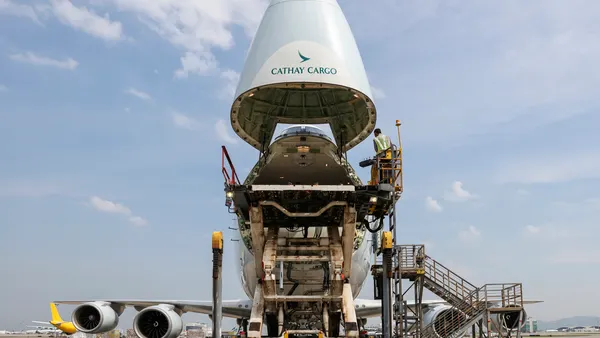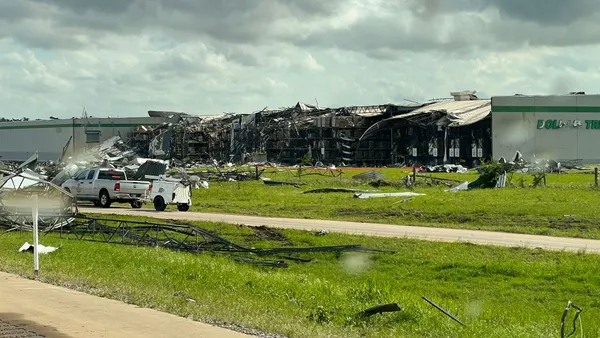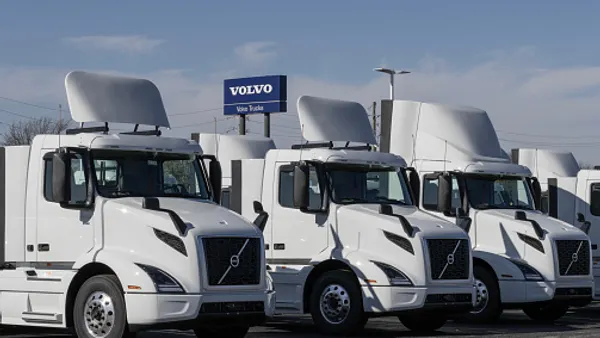Dive Brief:
- A fire at a Tyson Foods beef processing plant in Holcomb, Kansas, Friday has shifted national beef markets after two crews of firefighters fought the blaze for more than 12 hours. Chemicals used for cooling kept the fire burning overnight after it started Friday evening, according to the Meatingplace.
- The plant processes roughly 6% of U.S.-fed cattle, according to Steiner Consulting, and is down indefinitely, but the company plans to rebuild, according to a press release. It's too early to know how long the rebuild will take, Tyson said, but workers will be paid weekly until the plant resumes operation and workers may be called in to assist with the cleanup in the intervening months.
- Live cattle futures prices fell on Monday morning since slaughter capacity is now indefinitely diminished. Experts expect consumer prices should increase soon.
Dive Insight:
Tyson is the largest cattle slaughter operation in the country, processing 26% of fed cattle in the U.S. The Holcomb facility employs 3,800 of Tyson's 5,600 employees across six plants.
The immediate impact of disruption at this one facility shows how consolidated meat processing is in the U.S. Just five companies handle most cattle slaughter, according to Steiner Consulting.
“We’re taking steps to move production to alternative sites,” Steve Stouffer, group president of Tyson Fresh Meats, said in a statement. “Tyson Foods has built in some redundancy to handle situations like these and we will use other plants within our network to help keep our supply chain full.”
But processing capacity nationwide is nearly maxed out, according to Meatingplace. Steiner said the 6% dip in processing capacity will likely manifest in a depleted and pricier spot market for beef.
"Higher prices will be necessary to either ration out some demand or cause other packers to run extra shifts. Supplies in the spot market will likely be very tight, which normally results in a bidding war from those that are short," reads Steiner's daily livestock report from Monday. With Labor Day coming up, consumers may feel these price increases, especially on premium cuts.
Ranchers and cattle farmers, however, may see a dip in the prices they earn, since less processing capacity in the market means less demand for live cattle.
"The effect could quickly increase the longer this plant stays out of commission and it becomes necessary to adjust the flow of cattle through the entire supply chain," reads the report.













